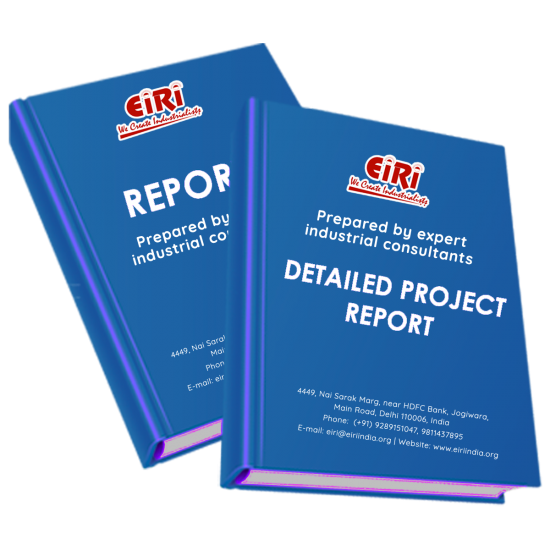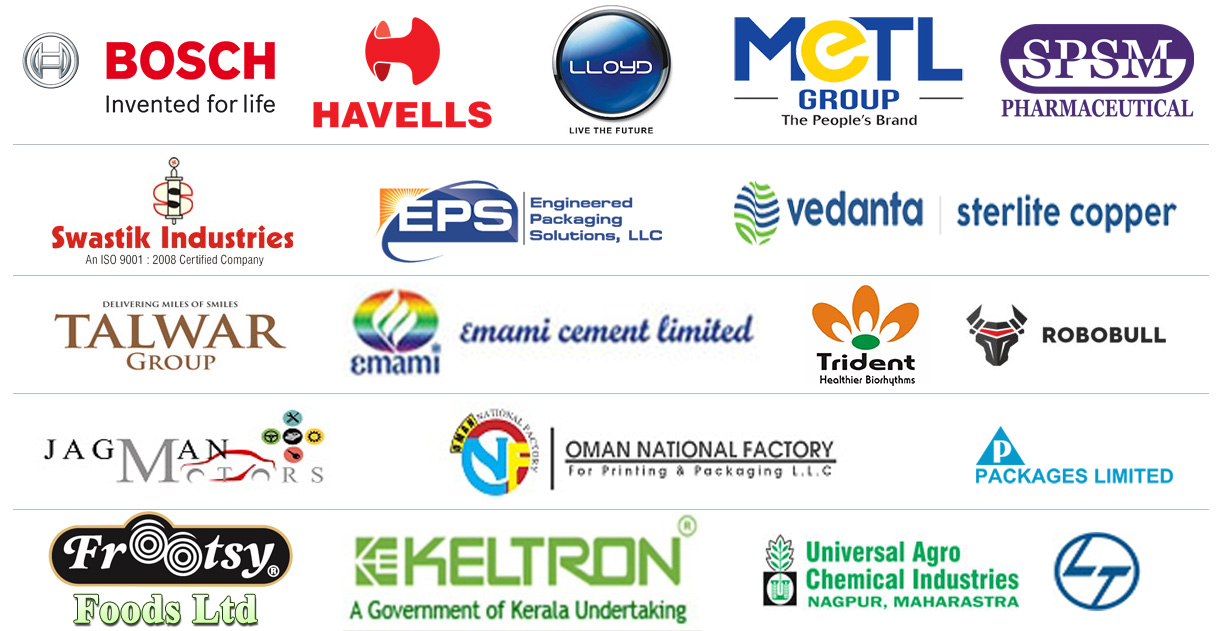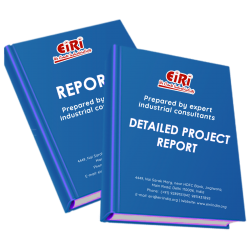Detailed Project Report on Soya Oil and Cattle Feed From Soya Bean (Cutting Into 4 Pieces Method)

- More than 40 years of experience
- Managed by expert industrial consultants
- ISO 9001-2015 Certified
- Registered under MSME, UAM No: DL01E0012000
- 24/5 Research Support
Get your quesries resolved from an industry expert. Ask your queries before report or book purchase. - Custom Research Service
Speak to the our consultant to design an exclusive study to serve your research needs. - Quality Assurance
All reports are prepared by highly qualified consultants & verified by a panel of experts. - Information Security
Your personal & confidential information is safe & secure.
SOYA OIL AND CATTLE FEED FROM SOYA BEAN (CUTTING INTO 4 PIECES METHOD)
[EIRI/EDPR/1427] (J.C.204)
INTRODUCTION
Primitive mills and presses for extraction of oils from seeds have been in use sevice long. Mechanization came with the introduction of the hydraulic press by the end of the 18th Century. This too was replaced by the more efficient screw press or expeller towards the end of the last century.
The first chemical process applied to fats and oils (excluding oxidation in burning) was saponification for making soap. Industrialization of oils and fats began with the installation of a cotton seed oil mill in South California in about 1826.
The methods were crude and the product was impure in 1850 the use of caustic soda to remove free acids from the oil was introduced in France. About this time the millers became aware of the value of linters (fibre) that clung to the Hulls and also of the Hulls themselves as cattle feed.
By 1887 more scientific methods of refining were introduced. In 1983 it was learned that the oil could be deodorized by blowing steam through it at high temperatures. In 1900 the discovery that oils could be hydrogenated to produce fats of different consistencies revolutionised the entire oil and fat industry. So far no comprehensive and absolute classification of vegetable fats and oils is made though various schemes have been used based on origin, physical characteristics, composition or use, or combinations of these factors.
They are more commonly classified according to their capacity for absorbing iodine i.e. Iodine value. Those with a high proportion of double bonds are called drying oils, those intermediate in capacity are called semidrying and those of low capacity non-drying. In general the non-drying and semi-drying oils are used as foods and as lubricants and the drying oils as paint and varnish ingredients. This distinction has never been a very precise one and is becoming less so as oils formerly classified as semi-drying such as soyabean are being used more and more in paints varnishes and other products that dry in a highly satisfactory way.
Edible oil should have a fairly high keeping quality. However oils get spoilt in storage due to various spoilage factors, the chief among them being oxidation. The edible oils and fats such as olive, cottonseed, corn, groundnut, sesamum, soyabean etc have been found to be almost completely assimulated. As such vegetable oils may be classed as edible and non-edible. Important vegetable oils are castor, coconut, cottonseed, linseed, mustard, olive, palm, groundnut, sesamum, soyabeans, sunflower and rice bran oil etc.
India is not only one of the leading oilseeds producing countries of the world but is the only country which produces in commercial quantities largest varieties of oilseeds. With the exception of palm, palm kernel, olives and tung. India produces all the principal oilseeds which form the basis of the world’s oil seed crushing industry. The oil milling industry in India may be divided into three groups depending upon the method of milling.
These are Ghani (manual - animal driven or small power driven), large oil mills (registered under Factories Act) and plants using solvent extraction techniques.
With the setting up of National Dairy Development Board, there has been a substantial growth in the number of Cattle form. By sustained efforts of agrigultural and veterinary department to boost the production of milk, a large number of forms for breeding milk Cattle have been developed on scientific lines in the Country Cattle feed essentially is a well balaneed food for cattles.
COST ESTIMATION
Plant Capacity 50.00 MT./Day
Land & Building (Area 5000 sq.mt.) Rs. 6.78 Cr
Plant & Machinery Rs. 2.24 Cr
W.C. for 1 Month Rs. 5.10 Cr
Total Capital Investment Rs.14.79 Cr.
Rate of Return 42%
Break Even Point 36%
CONTENTS
INTRODUCTION
USES AND APPLICATIONS
PROPERTIES
B.I.S. SPECIFICATIONS
MARKET SURVEY
PRESENT MANUFACTURE OF SOYABEAN OIL
RAW MATERIALS
ADVANTAGES OF EXPANDER-EXTRUDER-COOKER
RECOVERY OF OIL FROM SOYBEANS
MANUFACTURING PROCESS OF SOYA BEAN OIL
BY PRODUCTS OF REFINING
BY PRODUCTS RECOVERY
PROCESS FLOW DIAGRAM FOR SOYA BEAN OIL EXTRACTION & REFINING
MANUFACTURING PROCESS OF CATTLE FEED
PROCESS FLOW DIAGRAM FOR CATTLE FEED
PLANT LAYOUT
FILTER PRESS
MANUFACTURERS/SUPPLIERS OF RAW MATERIALS
PRINCIPLES OF PLANT LAYOUT
PLANT LOCATION FACTORS
EXPLANATION OF TERMS USED IN THE PROJECT REPORT
PROJECT IMPLEMENTATION SCHEDULES
APPENDIX – A:
01. PLANT ECONOMICS
02. LAND & BUILDING
03. PLANT AND MACHINERY
04. OTHER FIXED ASSESTS
05. FIXED CAPITAL
06. RAW MATERIAL
07. SALARY AND WAGES
08. UTILITIES AND OVERHEADS
09. TOTAL WORKING CAPITAL
10. TOTAL CAPITAL INVESTMENT
11. COST OF PRODUCTION
12. TURN OVER/ANNUM
13. BREAK EVEN POINT
14. RESOURCES FOR FINANCE
15. INSTALMENT PAYABLE IN 5 YEARS
16. DEPRECIATION CHART FOR 5 YEARS
17. PROFIT ANALYSIS FOR 5 YEARS
18. PROJECTED BALANCE SHEET FOR (5 YEARS)
How to Make Project Report?
Detailed Project Report (DPR) includes Present Market Position and Expected Future Demand, Technology, Manufacturing Process, Investment Opportunity, Plant Economics and Project Financials. comprehensive analysis from industry covering detailed reporting and evaluates the position of the industry by providing insights to the SWOT analysis of the industry.
Each report include Plant Capacity, requirement of Land & Building, Plant & Machinery, Flow Sheet Diagram, Raw Materials detail with suppliers list, Total Capital Investment along with detailed calculation on Rate of Return, Break-Even Analysis and Profitability Analysis. The report also provides a birds eye view of the global industry with details on projected market size and then progresses to evaluate the industry in detail.
We can prepare detailed project report on any industry as per your requirement.
We can also modify the project capacity and project cost as per your requirement. If you are planning to start a business, contact us today.
Detailed Project Report (DPR) gives you access to decisive data such as:
- Market growth drivers
- Factors limiting market growth
- Current market trends
- Market structure
- Key highlights
Overview of key market forces propelling and restraining market growth:
- Up-to-date analyses of market trends and technological improvements
- Pin-point analyses of market competition dynamics to offer you a competitive edge major competitors
- An array of graphics, BEP analysis of major industry segments
- Detailed analyses of industry trends
- A well-defined technological growth with an impact-analysis
- A clear understanding of the competitive landscape and key product segments
Need Customized Project Report?
- Ask for FREE project related details with our consultant/industry expert.
- Share your specific research requirements for customized project report.
- Request for due diligence and consumer centric studies.
- Still haven't found what you're looking for? Speak to our Custom Research Team
About Engineers India Research Institute:
Note: We can also prepare project report on any subject based on your requirement and country. If you need, we can modify the project capacity and project cost based on your requirement.
Our Clients

Our Approach
- Our research reports comprehensively cover Indian markets (can be modified as per your country), present investigation, standpoint and gauge for a time of five years*.
- The market conjectures are produced on the premise of optional research and are cross-accepted through associations with the business players
- We use dependable wellsprings of data and databases. What's more, data from such sources is handled by us and incorporated into the report
Why buy EIRI reports?
- Our project reports include detailed analysis that help to get industry Present Market Position and Expected Future Demand.
- Offer real analysis driving variables for the business and most recent business sector patterns in the business
- This report comprehends the present status of the business by clarifying a complete SWOT examination and investigation of the interest supply circumstance
- Report gives investigation and top to bottom money related correlation of real players/competitors
- The report gives gauges of key parameters which foresees the business execution





















